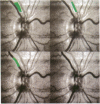Abstract
AIMS--An investigation was carried out to compare the image quality of the ocular fundus obtained clinically, photographically, and with the scanning laser ophthalmoscope (SLO) at visible and infrared wavelengths in patients with significant cataract. METHODS--Nineteen patients admitted for routine cataract extraction were examined clinically by two independent observers to ascertain cataract type and clarity of fundus view with an indirect ophthalmoscope. Fundus photography and both confocal and direct (non-confocal) SLO imaging at 590 nm, 670 nm, and 830 nm were carried out after pupillary dilatation. Images obtained were graded independently using a recognised grading system. RESULTS--Quality of SLO images appeared to be superior to indirect ophthalmoscopy (p < 0.01) and fundus photography (p < 0.001) when graded subjectively. Quantitative analysis of contrast of retinal vessels demonstrated significantly higher contrast for the SLO compared with digitised fundus photographs at all wavelengths tested (p < 0.001), with highest contrast at 590 nm. Use of a confocal aperture significantly improved vessel contrast but may reduce overall image intensity. CONCLUSIONS--Scanning laser ophthalmoscopy may offer a method to observe and record fine fundus detail in patients who have marked cataract.
Full text
PDF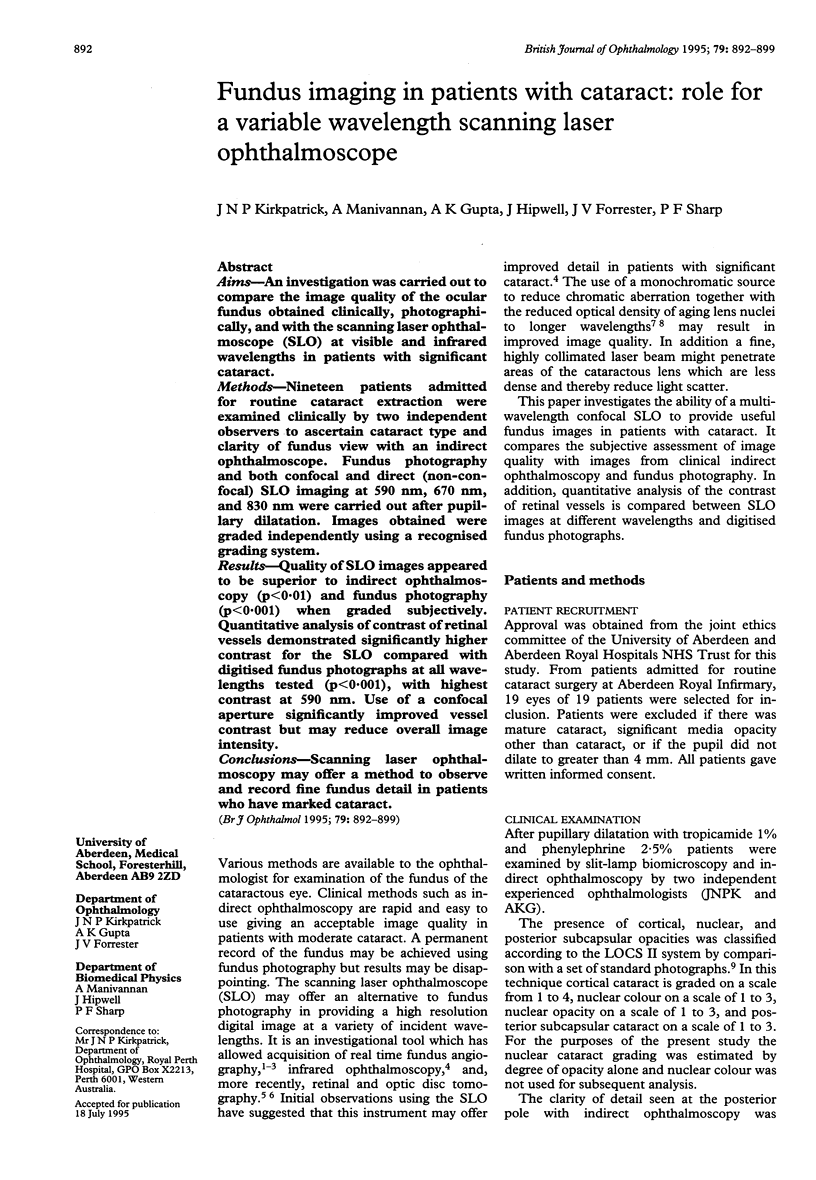
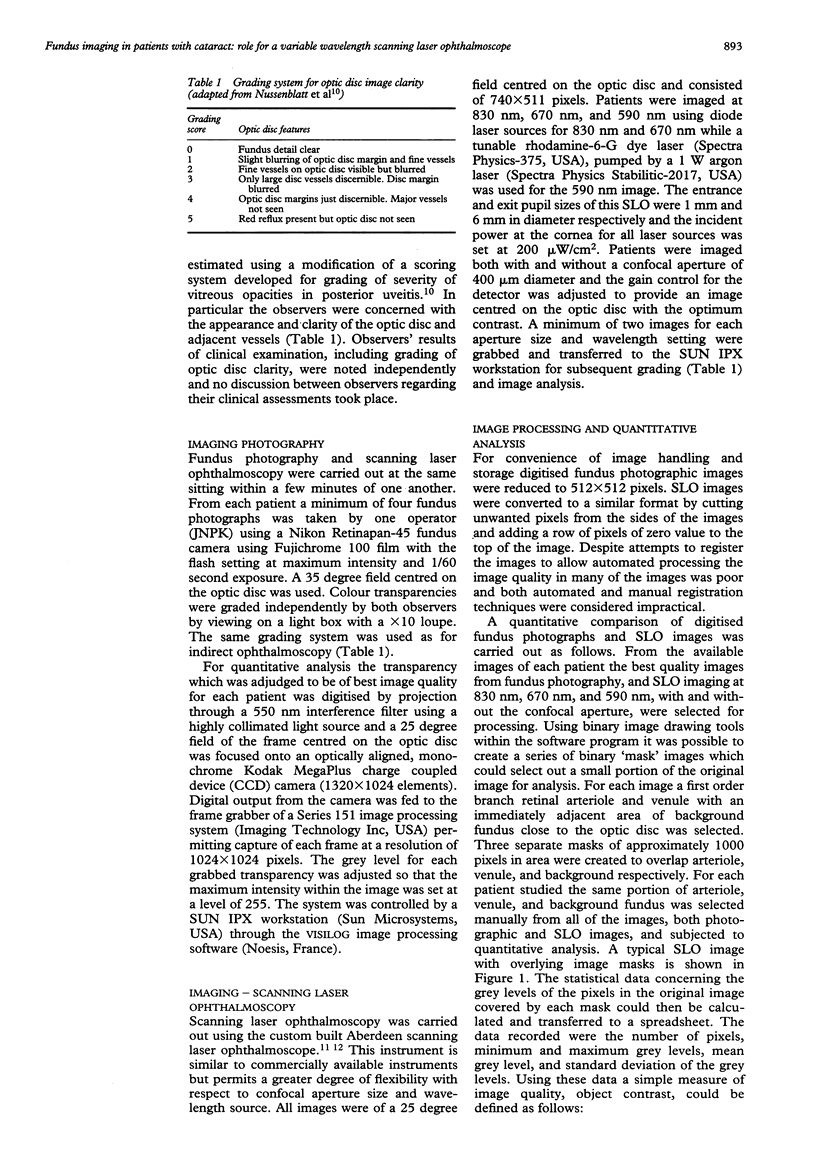
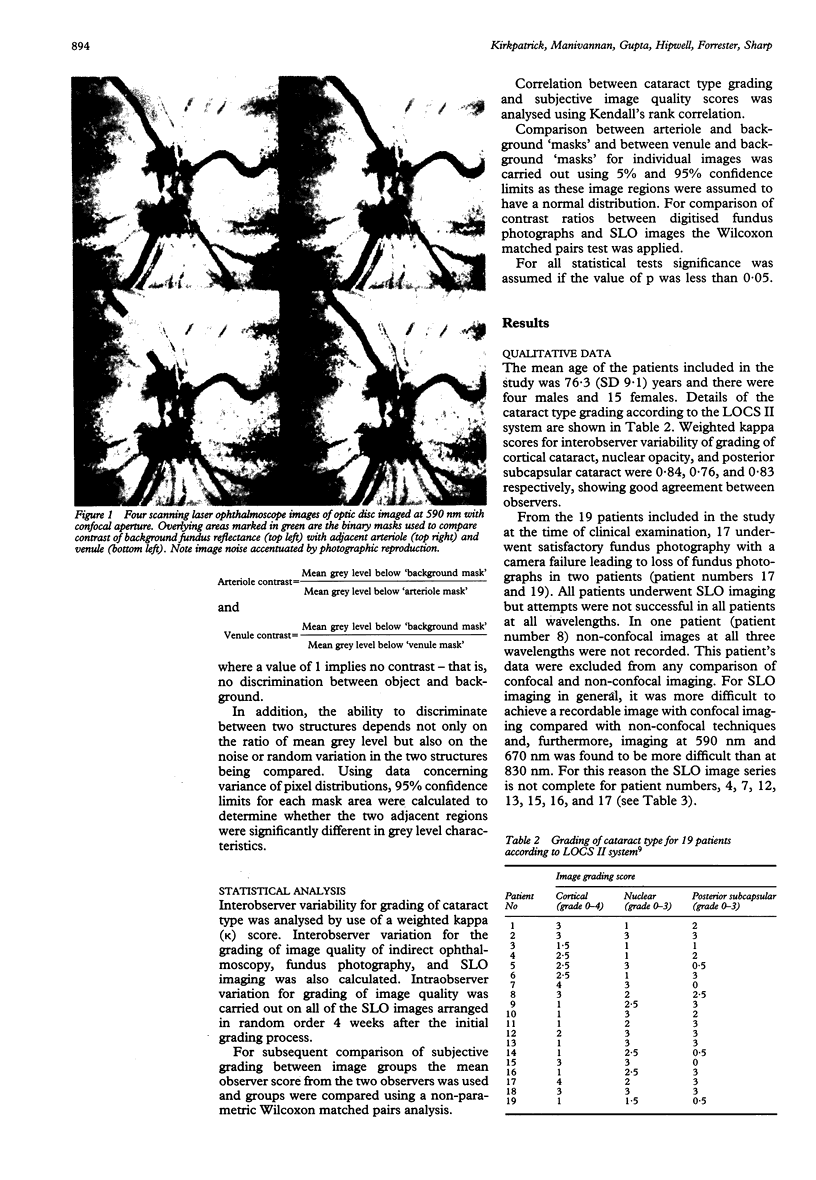
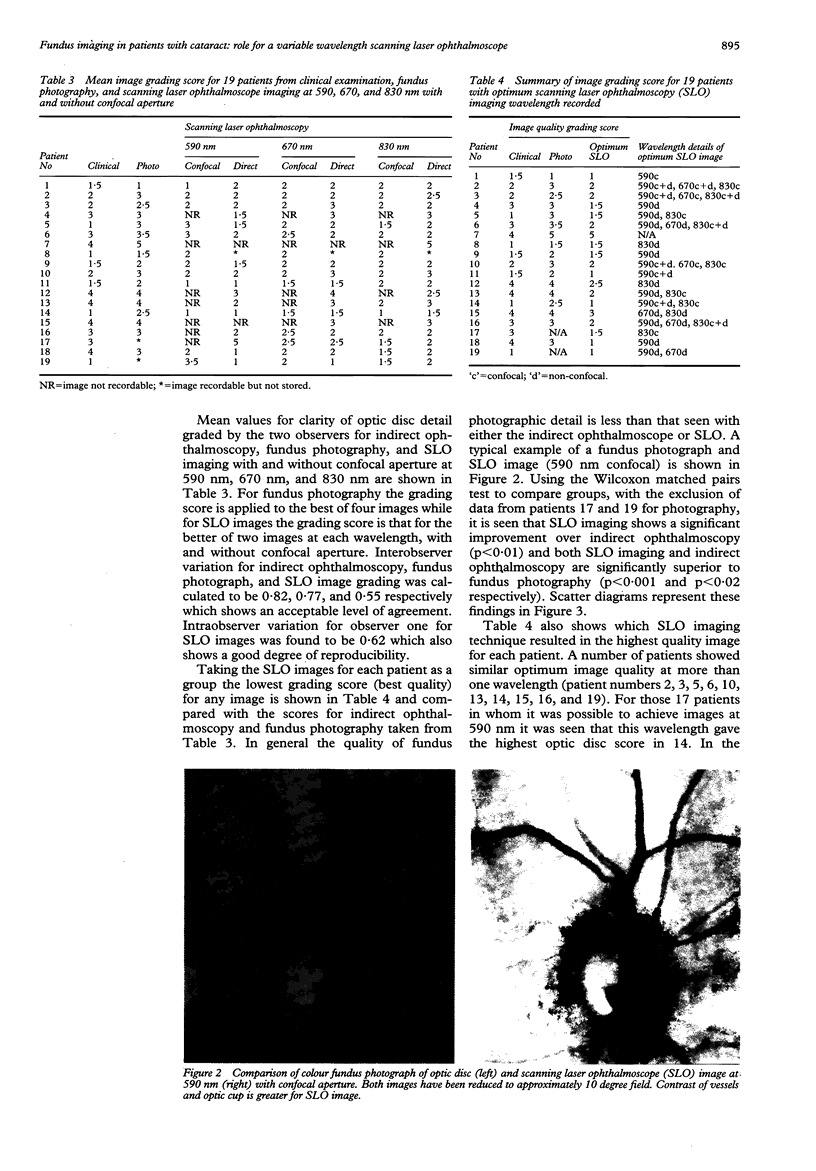

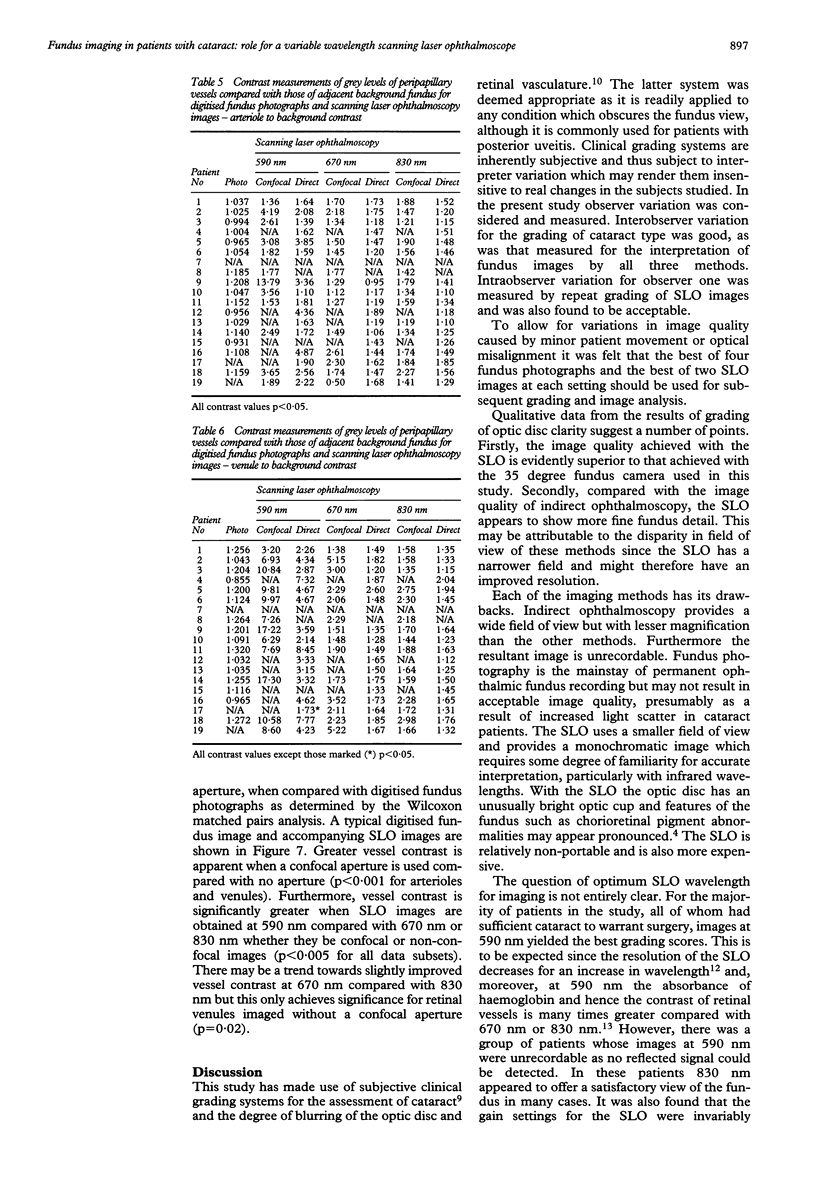
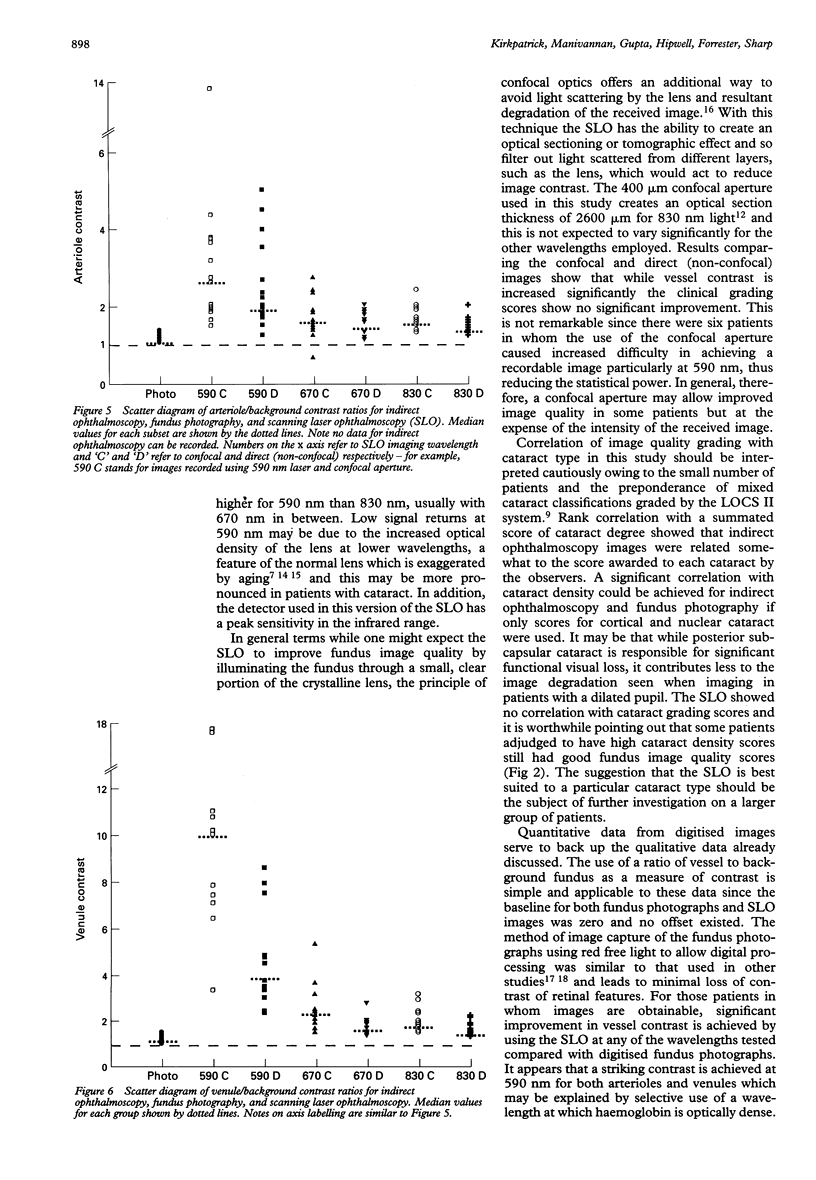
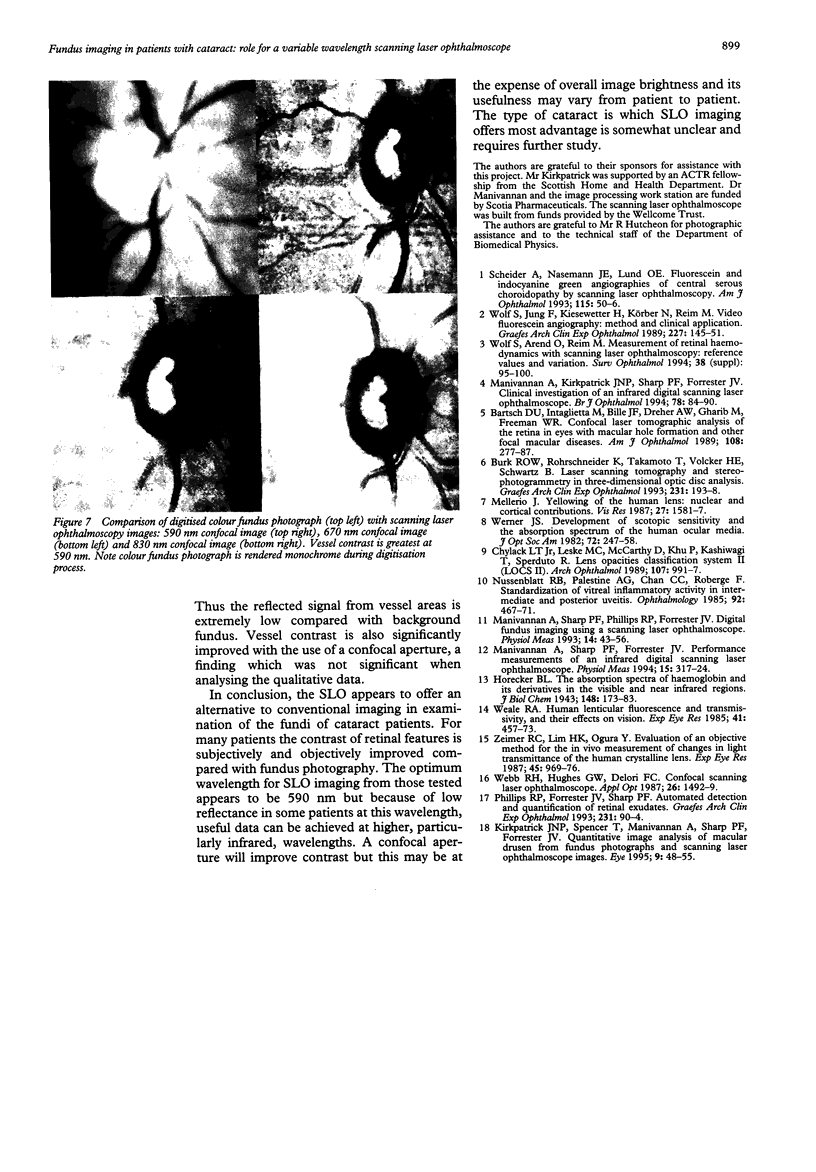
Images in this article
Selected References
These references are in PubMed. This may not be the complete list of references from this article.
- Bartsch D. U., Intaglietta M., Bille J. F., Dreher A. W., Gharib M., Freeman W. R. Confocal laser tomographic analysis of the retina in eyes with macular hole formation and other focal macular diseases. Am J Ophthalmol. 1989 Sep 15;108(3):277–287. doi: 10.1016/0002-9394(89)90118-9. [DOI] [PubMed] [Google Scholar]
- Burk R. O., Rohrschneider K., Takamoto T., Völcker H. E., Schwartz B. Laser scanning tomography and stereophotogrammetry in three-dimensional optic disc analysis. Graefes Arch Clin Exp Ophthalmol. 1993 Apr;231(4):193–198. doi: 10.1007/BF00918840. [DOI] [PubMed] [Google Scholar]
- Chylack L. T., Jr, Leske M. C., McCarthy D., Khu P., Kashiwagi T., Sperduto R. Lens opacities classification system II (LOCS II) Arch Ophthalmol. 1989 Jul;107(7):991–997. doi: 10.1001/archopht.1989.01070020053028. [DOI] [PubMed] [Google Scholar]
- Kirkpatrick J. N., Spencer T., Manivannan A., Sharp P. F., Forrester J. V. Quantitative image analysis of macular drusen from fundus photographs and scanning laser ophthalmoscope images. Eye (Lond) 1995;9(Pt 1):48–55. doi: 10.1038/eye.1995.7. [DOI] [PubMed] [Google Scholar]
- Manivannan A., Kirkpatrick J. N., Sharp P. F., Forrester J. V. Clinical investigation of an infrared digital scanning laser ophthalmoscope. Br J Ophthalmol. 1994 Feb;78(2):84–90. doi: 10.1136/bjo.78.2.84. [DOI] [PMC free article] [PubMed] [Google Scholar]
- Manivannan A., Sharp P. F., Forrester J. V. Performance measurements of an infrared digital scanning laser ophthalmoscope. Physiol Meas. 1994 Aug;15(3):317–324. doi: 10.1088/0967-3334/15/3/010. [DOI] [PubMed] [Google Scholar]
- Manivannan A., Sharp P. F., Phillips R. P., Forrester J. V. Digital fundus imaging using a scanning laser ophthalmoscope. Physiol Meas. 1993 Feb;14(1):43–56. doi: 10.1088/0967-3334/14/1/006. [DOI] [PubMed] [Google Scholar]
- Mellerio J. Yellowing of the human lens: nuclear and cortical contributions. Vision Res. 1987;27(9):1581–1587. doi: 10.1016/0042-6989(87)90166-0. [DOI] [PubMed] [Google Scholar]
- Nussenblatt R. B., Palestine A. G., Chan C. C., Roberge F. Standardization of vitreal inflammatory activity in intermediate and posterior uveitis. Ophthalmology. 1985 Apr;92(4):467–471. doi: 10.1016/s0161-6420(85)34001-0. [DOI] [PubMed] [Google Scholar]
- Phillips R., Forrester J., Sharp P. Automated detection and quantification of retinal exudates. Graefes Arch Clin Exp Ophthalmol. 1993 Feb;231(2):90–94. doi: 10.1007/BF00920219. [DOI] [PubMed] [Google Scholar]
- Scheider A., Nasemann J. E., Lund O. E. Fluorescein and indocyanine green angiographies of central serous choroidopathy by scanning laser ophthalmoscopy. Am J Ophthalmol. 1993 Jan;115(1):50–56. doi: 10.1016/s0002-9394(14)73524-x. [DOI] [PubMed] [Google Scholar]
- Weale R. A. Human lenticular fluorescence and transmissivity, and their effects on vision. Exp Eye Res. 1985 Oct;41(4):457–473. doi: 10.1016/s0014-4835(85)80004-x. [DOI] [PubMed] [Google Scholar]
- Werner J. S. Development of scotopic sensitivity and the absorption spectrum of the human ocular media. J Opt Soc Am. 1982 Feb;72(2):247–258. doi: 10.1364/josa.72.000247. [DOI] [PubMed] [Google Scholar]
- Wolf S., Arend O., Reim M. Measurement of retinal hemodynamics with scanning laser ophthalmoscopy: reference values and variation. Surv Ophthalmol. 1994 May;38 (Suppl):S95–100. doi: 10.1016/0039-6257(94)90052-3. [DOI] [PubMed] [Google Scholar]
- Wolf S., Jung F., Kiesewetter H., Körber N., Reim M. Video fluorescein angiography: method and clinical application. Graefes Arch Clin Exp Ophthalmol. 1989;227(2):145–151. doi: 10.1007/BF02169788. [DOI] [PubMed] [Google Scholar]
- Zeimer R. C., Lim H. K., Ogura Y. Evaluation of an objective method for the in vivo measurement of changes in light transmittance of the human crystalline lens. Exp Eye Res. 1987 Dec;45(6):969–976. doi: 10.1016/s0014-4835(87)80110-0. [DOI] [PubMed] [Google Scholar]



